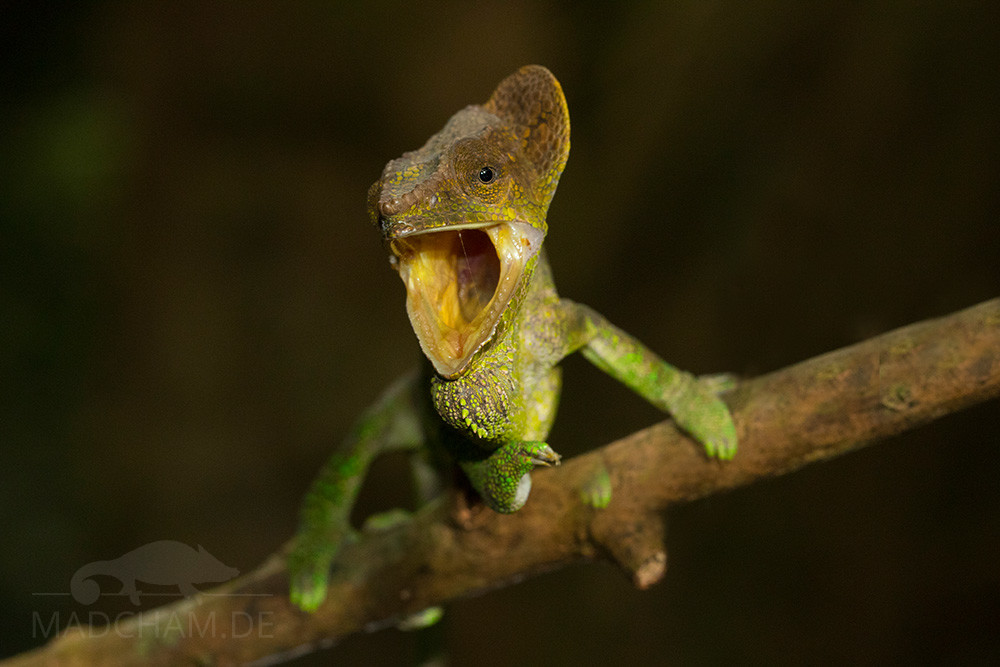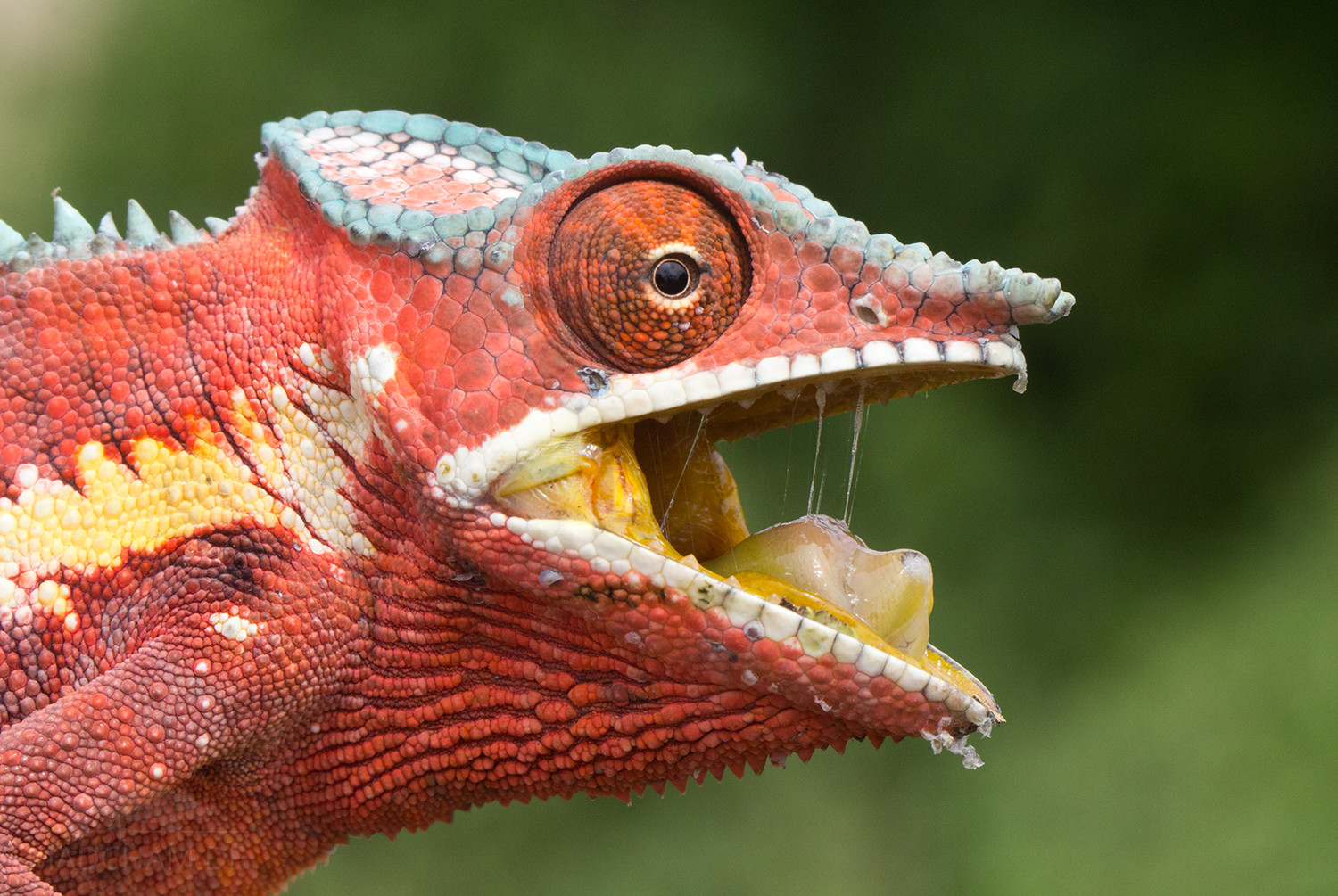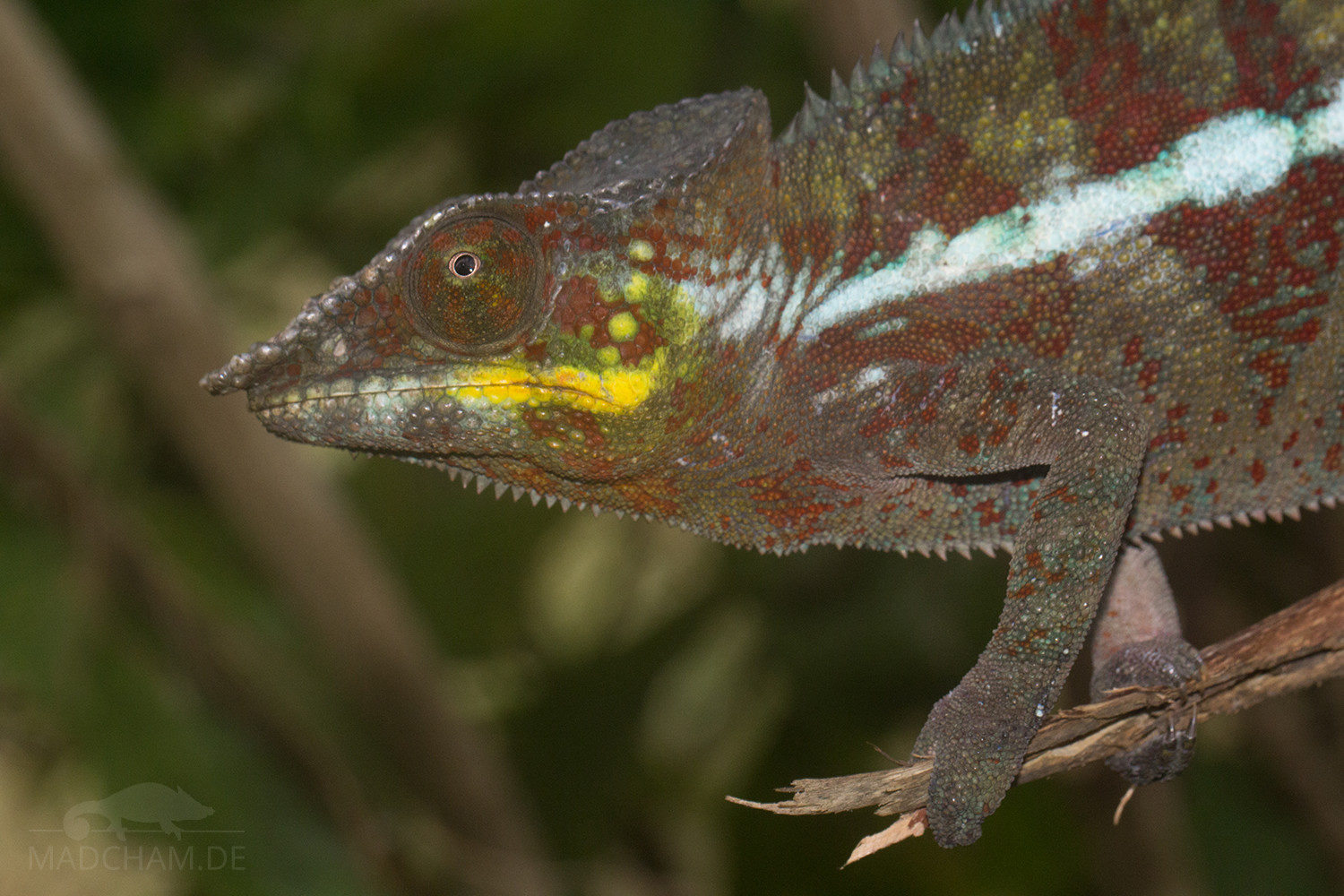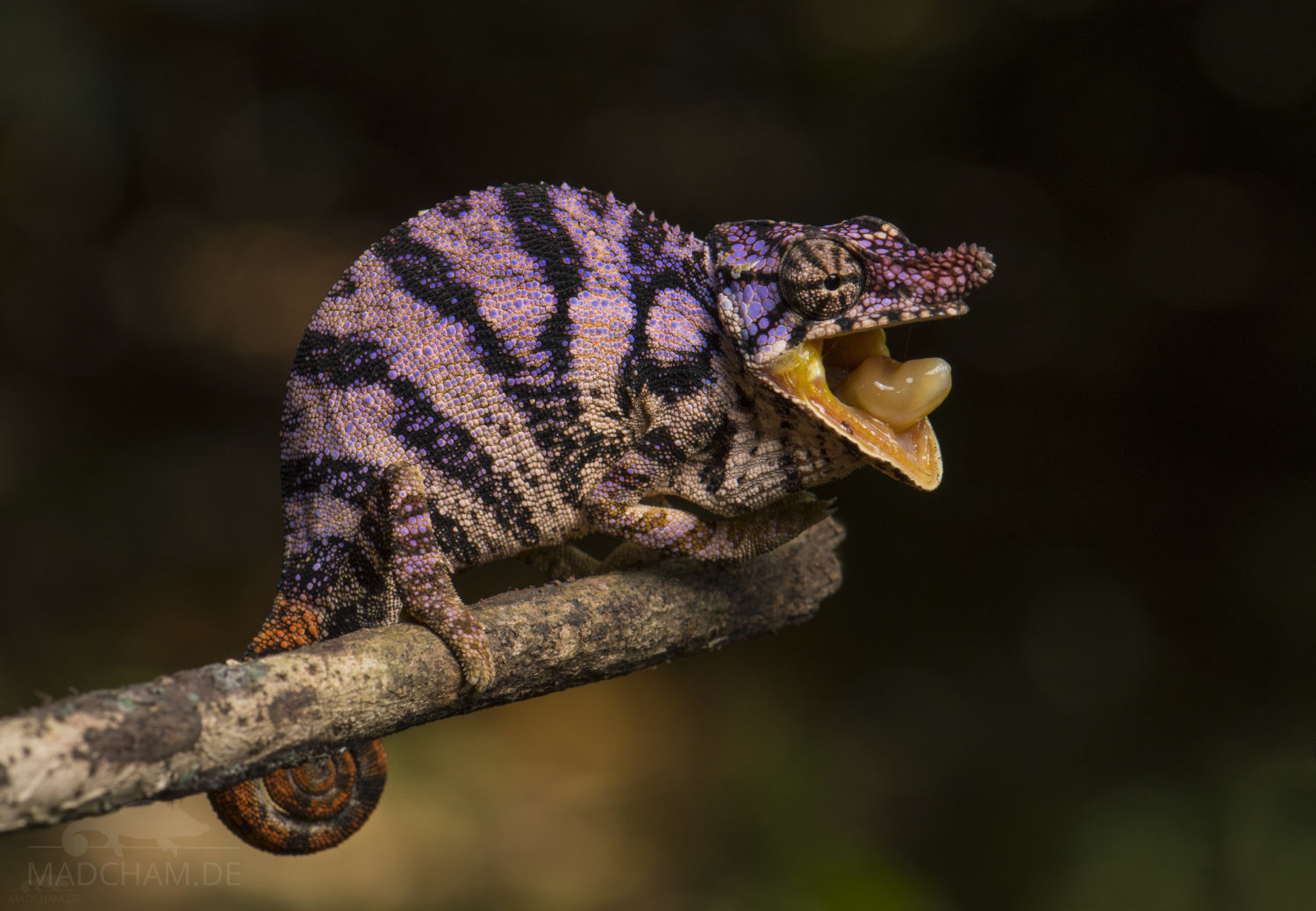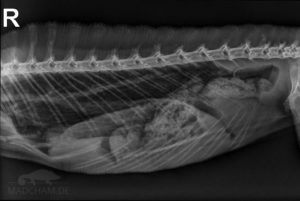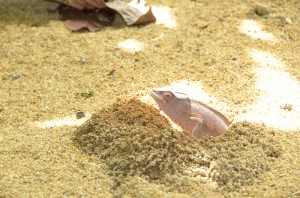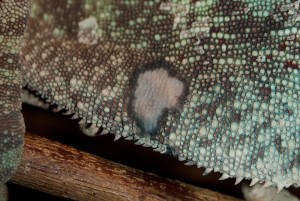When you get into chameleon keeping, sooner or later you will be very familiar with one word: Stress. No matter if you were talking to like-minded people on a conference or reptile show, or if you were browsing the social networks: Chameleons seem to be extremely sensitive to stress. People warn not to transport these animals, never change cage equipment, not handle inside the cage or not spray water on the chameleon – the reason is always: “This is too much stress for the animals” and “Stress makes your chameleon sick”. But what exactly is “stress”? And what does stress do with a chameleon?
In general, stress is defined as an “adaptive response to threats to an animal’s health and survival”.
So, stress is not bad per se, but vital for any living being.
Triggers of stress may be intrinsic and extrinsic factors. Temperature, light, diet, and cage count among extrinsic factors – broadly speaking mainly the cage and the care for your chameleon. But not only these may be triggers of stress, but fungal spores, viruses, bacteria, or social interactions with conspecifics or foreign individuals. Intrinsic factors may be genetic predispositions, the age of the chameleon, its gender, growth, its reproduction status, but even molting and the current state of health.
Well, what does stress mean? Stress is the answer of the body to all these factors. Admittedly, this seems to be a rather unsatisfying statement. In the end, the body reacts throughout the whole to all kinds of influence factors and is even itself a result of these. You could even say “The whole life is stress” – and by definition, this would be correct.
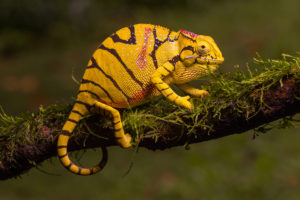
Colouring of an already pregnant Furcifer timoni female on sighting a male – also a form of stress
Actually “stress” mentioned among chameleon keepers does not mean the daily struggle of the chameleon’s body with its environment and itself. Indeed most keepers understand “stress” as the negative consequences that result from not species-appropriate keeping or non-appropriate handling of a chameleon – mostly, they mean diseases.
It is absolutely correct that any among these many, many stimuli that result in stress may be able to make a chameleon sick. For example, insufficient keeping may lead to long-lasting immunosuppression and thus benefit a disease that the body could repel under normal circumstances without problems. But stress does not always make you sick. By definition, it is also stress when a chameleon moves slower at colder temperatures. Or that a young chameleon eats more than an adult one. But all this is completely normal.
Primarily stress, the answer of the body to its environment, is not a problem at all. It is some kind of coping mechanism. But somewhen, this coping mechanism might become exhausted, the body is wasted. And this is when “stress” in its meaning as many chameleon keepers got it in mind begins to play a role: The animal’s body cannot cope anymore with the stimuli of this stress, which means a massive physical burden.
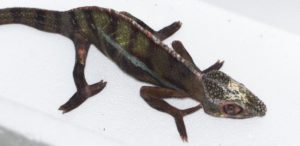
A highly stressed Furcifer pardalis – it has severe peritonitis and is terminally ill
An example would be a chameleon that is kept in a non-species-appropriate with a fountain, without plants or ventilation screens, but with energy-saving bulbs. Usually, it runs around the house, through the living room and the kitchen. First off, everything seems to be fine. The chameleon’s body can still compensate for the lack of UVB, too low humidity, and some accidents while climbing the curtains or meeting the house cat. But eventually, the immunosuppression lasts too long. This is the point where the lung cannot fight the omnipresent bacteria and fungal spores anymore, where the skin cannot maintain its function as a barrier due to the permanently suppressed immune system, where the body mobilizes calcium from the bones in order to balance the lack in the blood caused by lack of UVB lighting and thus not built vitamin D3. The chameleon becomes sick.
Did stress make this chameleon sick? Only indirectly. The inundating stimuli that led to stress were the reason for the disease. In this example, this means the many factors of not species-appropriate keeping and care.
So, if we talk about “stress”, we should always explain what exactly we mean. Tell other people what might be the cause for a chameleon’s body to react in a way that could become negative for the animal. Otherwise, “stress” just remains an umbrella term for any kind of inner and outer factors that may influence a chameleon in any way – quasi everything.

